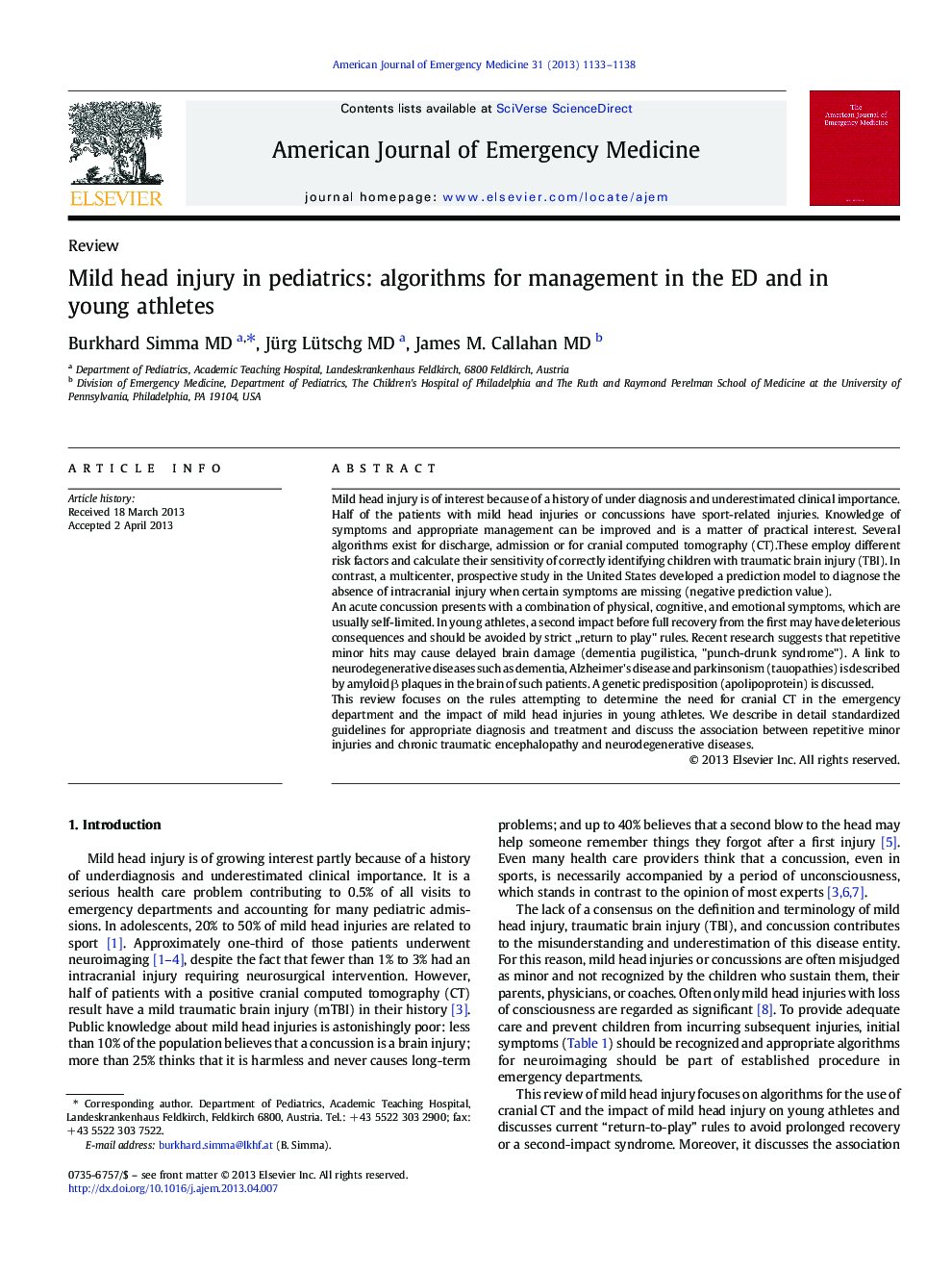| کد مقاله | کد نشریه | سال انتشار | مقاله انگلیسی | نسخه تمام متن |
|---|---|---|---|---|
| 3223489 | 1588128 | 2013 | 6 صفحه PDF | دانلود رایگان |

Mild head injury is of interest because of a history of under diagnosis and underestimated clinical importance. Half of the patients with mild head injuries or concussions have sport-related injuries. Knowledge of symptoms and appropriate management can be improved and is a matter of practical interest. Several algorithms exist for discharge, admission or for cranial computed tomography (CT).These employ different risk factors and calculate their sensitivity of correctly identifying children with traumatic brain injury (TBI). In contrast, a multicenter, prospective study in the United States developed a prediction model to diagnose the absence of intracranial injury when certain symptoms are missing (negative prediction value).An acute concussion presents with a combination of physical, cognitive, and emotional symptoms, which are usually self-limited. In young athletes, a second impact before full recovery from the first may have deleterious consequences and should be avoided by strict „return to play" rules. Recent research suggests that repetitive minor hits may cause delayed brain damage (dementia pugilistica, "punch-drunk syndrome"). A link to neurodegenerative diseases such as dementia, Alzheimer's disease and parkinsonism (tauopathies) is described by amyloid β plaques in the brain of such patients. A genetic predisposition (apolipoprotein) is discussed.This review focuses on the rules attempting to determine the need for cranial CT in the emergency department and the impact of mild head injuries in young athletes. We describe in detail standardized guidelines for appropriate diagnosis and treatment and discuss the association between repetitive minor injuries and chronic traumatic encephalopathy and neurodegenerative diseases.
Journal: The American Journal of Emergency Medicine - Volume 31, Issue 7, July 2013, Pages 1133–1138